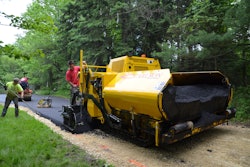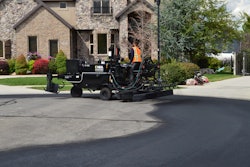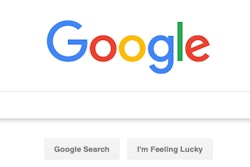
For the last 15 years, I have striped mostly newly paved parking lots. There are several different ways to make the layout marks that guide you to paint straight lines on this new asphalt pavement.
I have tried string and weights or nails, rotating lasers, and chalk lines. I have used an auto-layout machine and have tried painting without lines. I have painted alongside a string and have used upside-down spray cans to “dot” the string and painted to the “shadow” left by the string. I have measured how long each method takes, and how well (if at all) they work.
It takes a little practice to get good and fast at snapping chalk lines, but for years chalk worked best for me. Chalk lines give you the chance to look over the layout and spot mistakes, weird angles, and other issues before painting.
After years of experimenting and trying virtually other material out there, I rely on blue chalk for almost all the lines I chalk. Why do I use blue chalk? Why not white chalk or some other color?
Here’s the number one reason: When I finish a parking lot, the layout marks are still there. The chalk lines and measurement marks remain until the rain washes them away. I see the beautiful new stripes and recognize the layout marks for what they are -- but civilians like the owner or general contractor won’t necessarily see the layout marks as such. Instead they see them as part of the pavement markings.
If I use white chalk and white paint, to the untrained eye the chalk might look like paint overspray or spills. Blue chalk is obviously not paint and it’s easier for the customer to recognize the blue chalk as layout markings that will go away. (I paint blue squares for the handicap symbol on most jobs, but that is different enough that it doesn’t confuse the situation.) Blue chalk is easy to see on asphalt, sealcoat, and concrete pavement, but perhaps most importantly, the customer is almost guaranteed not to confuse it with messy paint markings.
Here’s a quick rundown on the pros and cons of different chalk colors:
A Pavement Advisory Board member since 2002, speaker at National Pavement Expo and moderator of the NPE Stripers Roundtable, Robert Liles is owner of Robert Liles Parking Lot Service, Tyler, TX. Today he relies on a laser-guided striping machine for much of his work, relying on chalk primarily for end lines. He also runs the industry’s most-visited striping website, www.parkinglotplanet.com.











![Lee Boy Facility 2025 17 Use[16]](https://img.forconstructionpros.com/mindful/acbm/workspaces/default/uploads/2025/09/leeboy-facility-2025-17-use16.AbONDzEzbV.jpg?ar=16%3A9&auto=format%2Ccompress&fit=crop&h=135&q=70&w=240)








